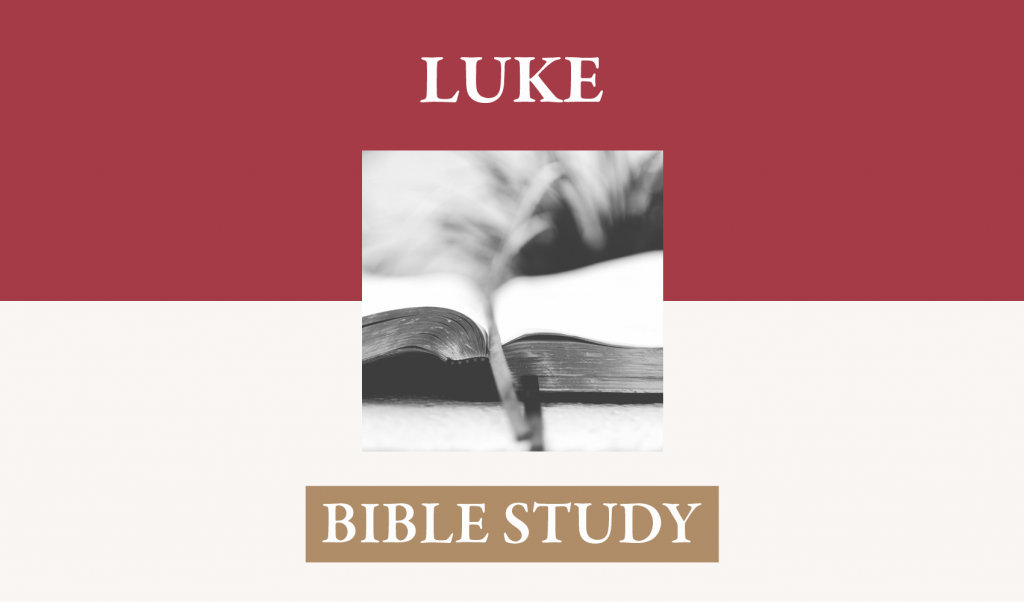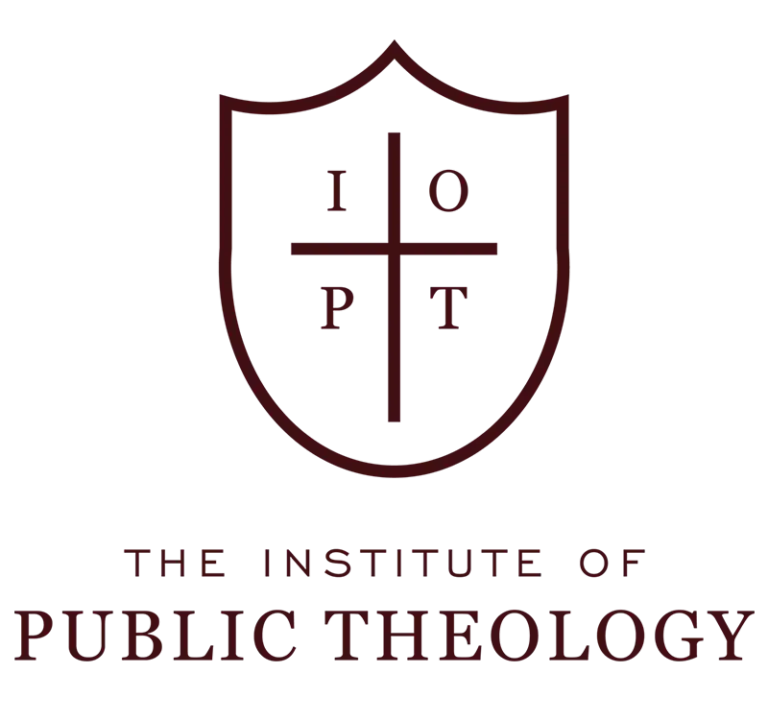Week of December 30, 2018
The Point: We have a sure hope when we trust in Jesus.
Simeon’s Hymn of Praise: Luke 2:25-35.
[25] Now there was a man in Jerusalem, whose name was Simeon, and this man was righteous and devout, waiting for the consolation of Israel, and the Holy Spirit was upon him. [26] And it had been revealed to him by the Holy Spirit that he would not see death before he had seen the Lord’s Christ. [27] And he came in the Spirit into the temple, and when the parents brought in the child Jesus, to do for him according to the custom of the Law, [28] he took him up in his arms and blessed God and said, [29] “Lord, now you are letting your servant depart in peace, according to your word; [30] for my eyes have seen your salvation [31] that you have prepared in the presence of all peoples, [32] a light for revelation to the Gentiles, and for glory to your people Israel.” [33] And his father and his mother marveled at what was said about him. [34] And Simeon blessed them and said to Mary his mother, “Behold, this child is appointed for the fall and rising of many in Israel, and for a sign that is opposed [35] (and a sword will pierce through your own soul also), so that thoughts from many hearts may be revealed.” [ESV]
“Witness of Simeon [25-35]. [25] Simeon’s Righteousness. Jesus’ parents meet Simeon, the first of two pious saints who give Spirit-led testimony to Jesus at the temple. Such testimony reveals strong divine sanction of Jesus. Simeon is presented as a simple man, a layman, not a priest, who dwells in Jerusalem. Simeon was a common name, since it was the name of one of Jacob’s sons [Gen. 29:33]. The name Simeon means “God has heard,” but the meaning plays no role for Luke. What is revealed about Simeon is neither his vocation nor his age, but his spiritual condition. He was a devout believer in God. The description of Simeon as righteous and devout shows him to be an exemplary saint. Clearly Simeon is seen in a favorable light. Simeon not only is righteous, he also lives in the hope that God’s promise will come to pass: he is awaiting the consolation of Israel. Israel’s consolation was a key element in many strands of Old Testament and Jewish eschatology, referring to the hope of deliverance for the nation. Later, the rabbis would refer to Messiah as comforter because they saw Him as the one who would bring this consolation. In the Old Testament, various agents brought God’s consolation, but a primary agent in eschatological contexts was the Servant of God. This desire for consolation characterizes the believer or God-fearer in Luke [6:23-24; 17:22-37; 21:25-36]. Interestingly, while Luke associated consolation with Messiah, John will associate it with the Spirit [John 14-16]. One also can associate this hope with the idea of messianic comfort given to those in darkness [1:79]. God was expected to complete His promise, and Simeon looked forward to the arrival of that day. Simeon was not only pious and expectant, he was blessed, having received a special work of the Holy Spirit. This last note prepares the reader for the revelation that Simeon receives in 2:26 as well as for his prophetic statements in 2:29-32, 34-35. The one through whom God speaks is a righteous man of rare spiritual quality and gift. [26] The Spirit’s Promise. Simeon’s prophecy is described further as God’s promise to Simeon by the Holy Spirit. Simeon received a revelation from the Spirit. The association between God’s Spirit and prophecy is strong, as Judaism looked to an active Spirit in the new age accompanying God’s act of deliverance. In this case, Simeon received a promise that God would not let him die without seeing the Messiah. The remark ties together the messianic idea [2:26] with the idea of Israel’s consolation [2:25]. Only when this is fulfilled is the prophet ready to die [2:29-30]. As in all the other cases in this infancy section, God’s word comes to pass for the prophet. Jesus’ coming reflects regal messianic hope, the basic initial category for Luke’s presentation of Jesus. [27] Simeon’s Reception of the Child. The prophecy’s specific setting involves Simeon’s going to the temple by the divine leading of the Spirit. Though the phrase, in the Spirit, in other contexts speaks of prophetic vision [Rev. 1:10], here the reference is to the Spirit’s prompting that guides Simeon to the temple. God is responsible for this meeting. In the context of this event, Simeon is located either in the Court of the Gentiles or in the Court of Women, since Mary could be present only at these two locales. Despite the picture of many contemporary portrayals of this event, it seems unlikely that Simeon is a priest. The parents were proceeding into the temple to dedicate the firstborn according to the law, when Simeon stopped them. This fulfilling of the law serves once again to point out the pious obedience of Jesus’ parents. But the basic idea of the verse centers not on the parents but on a revelation about the Messiah that is given in the temple. While Jesus is brought to God for dedication, God testifies to Jesus the Messiah through the prophet. For pietistic Jews, there could hardly be a more solemn locale for the testimony. [28-29] Praise. Simeon takes the child and expresses his gratitude to God for sharing in this special moment. What follows is a hymn of prophetic praise to God for the joy of seeing the Messiah in fulfillment of God’s word. Simeon’s reception of Jesus is intended to picture the arrival of messianic hope for Israel. The prophet represents the nation and, beyond that, all humanity. The third hymn of the infancy section is known as the Nunc Dimittis, a name that comes from the hymn’s opening phrase in the Latin version. The hymn is composed of three pairs of lines. In the narrative the hymn completes a promise-fulfillment-praise chain, where the promise of seeing the Messiah is made in 2:26, while the fulfillment comes in holding the child in 2:28. The hymn is a joyful response of praise for the fulfillment of God’s promise, a pattern that is related to the function of each of the hymns in Luke 1-2. Thus, the hymn says that God acts according to your word. Here God’s word is the promise that death would not come until the Messiah was seen. Simeon declares that he can now rest, because in seeing Jesus he has seen God’s salvation. Simeon is like the watcher who can leave an assigned post because the anticipated event has come. With his task performed, God can do with Simeon what He wishes. The reference to God’s Word looks back to the promise of 2:26, but more interesting is the idea of departing in peace. It seems best to understand peace as referring to the comfort of knowing that God’s work comes to fulfillment. Simeon’s life can come to an end with him at peace in this knowledge. God again has brought His word to pass, a source of encouragement and assurance not only to Simeon but also to Luke’s readers. [30] Reason for Praise. Simeon’s having seen God’s salvation is the reason he can ask for release from his post. The interesting feature of this verse is that seeing God’s salvation is linked directly to seeing Jesus, so that a strong tie exists between salvation and the one who personifies it. This connection in turn relates to the idea of Israel’s consolation in 2:25. Fulfillment has come in Jesus, and so Simeon can die in peace. The idea that the person of Jesus is at the center of soteriology is a keystone of Lucan Christology. With Jesus’ birth, salvation comes. It is clear that in Lucan theology salvation comes and God comes because Jesus the Messiah has come. The idea of one’s seeking God’s salvation has Old Testament echoes [Isa. 40:5; 52:10; Ps. 98:2]. The association of joy with seeing God’s salvation appears again in Luke 10:23-24. For Luke, the Messiah’s coming is at the center of salvation. The mood of joy in this text dominates the rest of the passage. [31-32] A Light for the Nations, Glory for Israel. Simeon turns to describe the divinely promised salvation. The relative pronoun that refers back to the salvation mentioned in 2:30. It is a salvation that God prepares. The reference, you have prepared, points to God’s design of salvation in history, a design that included a deliverer coming through Israel. The idea of the preparation of salvation is unique, and in the light of what follows, this must mean the providential preparation of salvation through Israel’s history, according to prophecy and promise, until the time of fulfillment which is now recognized. This salvation should not catch people by surprise, since it was expected. The salvation was not only designed, it was prepared before a vast throng. The phrase, in the presence of all peoples, identifies a large audience and has produced some discussion. Does peoples refer only to Israel, as the plural reference to peoples in Acts 4:27 suggests? Or does the term refer to both Israel and the Gentiles, suggesting a note of universalism in Luke for the first time? Both the Old Testament background and the parallelism of Luke 2:32, which refers to both racial groups, indicate a universal reference [Isa. 55:5; 60:5; 61:9]. Thus, God intends to extend to all the salvation that comes in Jesus. Though the language looks at salvation’s preparation in the sight of all, the following verse makes clear that participation in that salvation also extends to every racial group. All will see what Jesus has done, and each group will share in its benefits. Luke describes this salvation in further detail in 2:32. Light suggests the coming of illumination into a place of darkness. Light as illumination means this light is revelation for the Gentiles. God’s revelation dwells in a person, an idea that implies some of what John says explicitly when he calls Jesus the Word. If Jesus is revelation for the Gentiles, He is more than that for Israel. He is its glory. As Isaiah 60:1-3 shows, the nation’s hope was that, with the coming of salvific light to Israel, the attention of all people would be drawn to Israel. Isaiah 46:13 makes clear that Israel’s task makes it special and that God’s righteousness approaches it [Rom. 10:5-8]. At the heart of what makes the nation special is that salvation comes through it. Simeon’s note contains a hint of joy that the nation’s vindication comes in Jesus. In sum, Simeon is a picture of redemption’s joy in that he senses the significance of who Jesus is and rests in that knowledge. The hymn as a whole repeats basic themes of all the hymns in the infancy narrative. God is acting for His people Israel. He is saving them according to His plan and promise. That salvation is found in Jesus. But the Nunc Dimittis also adds to these themes. Jesus is now directly associated for the first time with the “Servant” hope of Isaiah 40-66. However, it is not the suffering elements of this figure that are brought to the fore, as in other New Testament uses of this theme; rather it is the note of victory, vindication, and hope. In addition, the hymn adds the universal scope of Jesus’ work. The regal, Davidic, messianic Savior-Servant has come to redeem more than the nation of Israel; He has come for the world. [33-35] Blessing for Parents and a Prophecy of Division. Luke records the parents’ response to Simeon’s words. The description of Jesus’ universal task produces amazement. Simeon gives a blessing to the parents and then gives a special word to Mary. It is not entirely encouraging. His topic is Jesus, division, and Israel. Jesus’ ministry is summarized in two images. He is the one who is set for the falling and rising of many in Israel, and He is a sign. The first image is drawn from passages in Isaiah, where God is portrayed as setting up a stone of stumbling over which some fall [Isa. 8:14-15], a precious cornerstone that will not disappoint those who trust in it [Isa. 28:13-16]. The use of these texts was common in the New Testament [Rom. 9:33; 1 Peter 2:6-8; Luke 20:17-18]. Since the Messiah was the personification of God’s deliverance and the agent of His justice, these texts were easily related to the Messiah. The nature of the fall and rising is disputed. Is there one group that falls only to rise again, a reference relating only to the believers’ suffering and vindication? Or are there two groups, unbelievers who fall and believers who rise on the basis of their response faith to Jesus? Those who argue for one group make the point that in the Old Testament the image of rising and falling refers to the same group [Amos 5:2; 8:14; Isa. 24:20; Micah 7:8; Prov. 24:16]. Against this view is the context, which seems to suggest a note of deep pain in Mary in 2:35. If the note of this saying is evenly positive and negative for one group, then the focus on her pain seems inappropriate. In addition, the normal force of the stone image in the New Testament is one of division [Luke 20:17-18; Rom. 9:33; 1 Peter 2:6-8]. Finally, a consistent New Testament note about Jesus’ ministry is that it divides people into two groups [Luke 4:29; 6:20-26; 13:28-29,33-35; 16:25; 18:9-14; 19:44,47-48; 20:14-18]. Thus, it seems better to see an allusion to two groups in falling and rising, with those who reject Jesus headed for a fall, while those who accept Him in faith are headed for vindication. The qualification in Israel shows the nationalistic and Jewish perspective of the account. Jesus will divide the nation. The emphasis on opposition continues in the reference that Jesus will be a sign of contesting. Humans will resist Jesus. For them, Jesus will not be a hope of promise fulfilled, but a figure who is to be opposed. The sign is characterized best as one of contention, not only rejection, because the point of the context is division. Simeon knows that although Jesus is God’s hope, not everyone will respond positively to Him. The raising of this aspect of Jesus’ fate is Luke’s first indication that all will not go smoothly for God’s Anointed. Simeon turns from the effect of Jesus on the nation to the effect that Jesus will have on Mary [35]. It is best to see the remark to Mary as parenthetical (ESV). The construction goes from a broad audience in 2:34, to a personal reference in 2:35a, and then back to a broad audience in 2:35b. The personal focus of Simeon’s remark in 2:35a is made clear by the reference your own soul. He tells Mary that the child shall cause a sword to pass through her own soul. After this brief personal remark, Simeon returns to the broad picture. The purpose (so that) of Jesus’ having a ministry that divides is so that the thoughts of the hearts might be made manifest. Jesus’ ministry shows where hearts really are before God. Jesus will expose those who do not believe. He is a litmus test for the individual Jewish responses to the fulfillment of their promise. Do they believe it or not? The reference to hearts points to the deepest seat of thought. The manifestation of these thoughts alludes to judicial exposure by Jesus. How humans respond to God’s promise is made evident by how they respond to Jesus, whose presence reveals their true colors. Simeon focuses on the exposure of those who will not respond to God, as the mention of hostile thoughts makes clear. Jesus comes; humans choose. Some oppose Him and fall. Luke is honest about the tension and God’s response. When Simeon’s prophecy is viewed as a whole, one sees a prophet at peace because he knows that God’s salvation has come. Salvation’s light has come in the Messiah; Simeon rejoices. But the picture is not entirely rosy. For the Promised One is variously perceived, and many in Israel will reject Him. In the path the child takes, His mother will feel pain; but His ministry will expose who is hostile to God. The messianic Son will be a light to the world, but His shining will bring division as He shines forth. Many will be raised to the Light, but tragically others will fall in judgment, having missed the promise.” [Bock, pp. 234-250].
Questions for Discussion:
1. Look at what Simeon says about salvation in his hymn. Who does he associate with salvation? Why is this important at this point in Luke’s gospel? What does Simeon mean when he says that God has prepared salvation in the presence of all peoples? How is salvation a light? Why is salvation a revelation to Gentiles while being a glory to Israel?
2. How does Luke describe Simeon? In what way was he righteous and devout? What does it mean to wait? What do we learn from Simeon concerning how to wait on God?
3. What is your response to Jesus? Are you for Him or against Him? Will you rise or will you fall? This is the great question of life and death, because what God will do with us for all eternity depends on what we do with Jesus right now. He is the Great Divide. God uses His cross to reveal our true character, working out His eternal decrees of election and reprobation. There is no neutrality. Either we are with Jesus or we are against Him.
References:
Luke 1:1-9:50, Darrell Bock, BENT, Baker.
The Gospel According to Luke, James R. Edwards, Pillar, Eerdmans.
Luke, David Garland, Zondervan (ebook).
Luke, vol. 1, Philip Ryken, REC, P & R Publishing.




























